Straight from the desk of The New Knew founder Lisa Fennessy, here’s a curated list of the best 10+ non-toxic, safe and clean burning, organic candles to buy in 2024. Plus, tips on what to look for in a non-toxic candle, and the ingredients to avoid when shopping for a new candle.

By: Lisa Fennessy
IN THIS POST:
- How to read candle labels
- Nontoxic candle buying guide
- Soy blend wax candles
- Coconut wax candles
- More nontoxic candle options
- References
On writing days, I wake up, make my blended coffee, sit at my desk, light a candle and let the writing begin. Candles add so much ambiance and they can bring a room to life.
There are a plethora of candles to choose from on the market but (with most things) some are better than others. Here’s what to consider, how to decode labels and what to know to choose a clean one.
RELATED: Read our 9 ways to make your home smell good for the holidays.
How to read candle labels
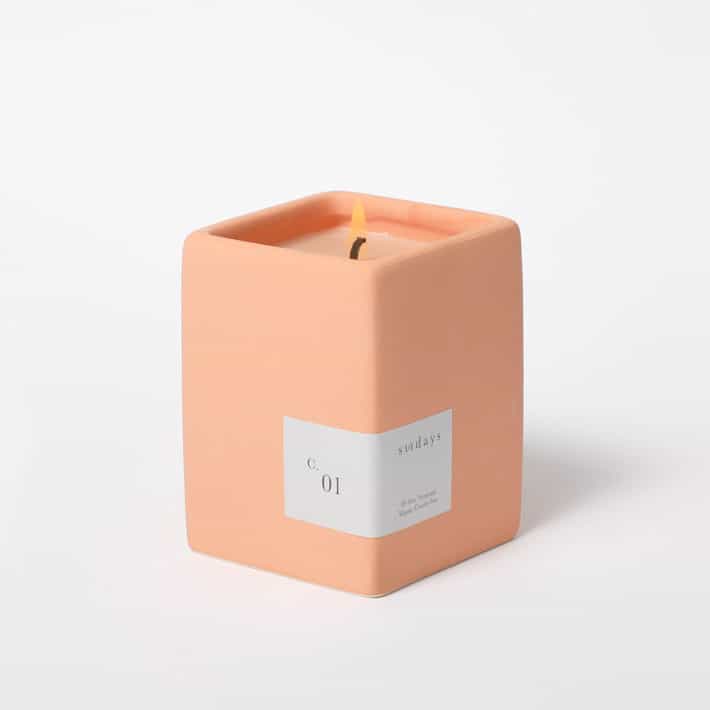
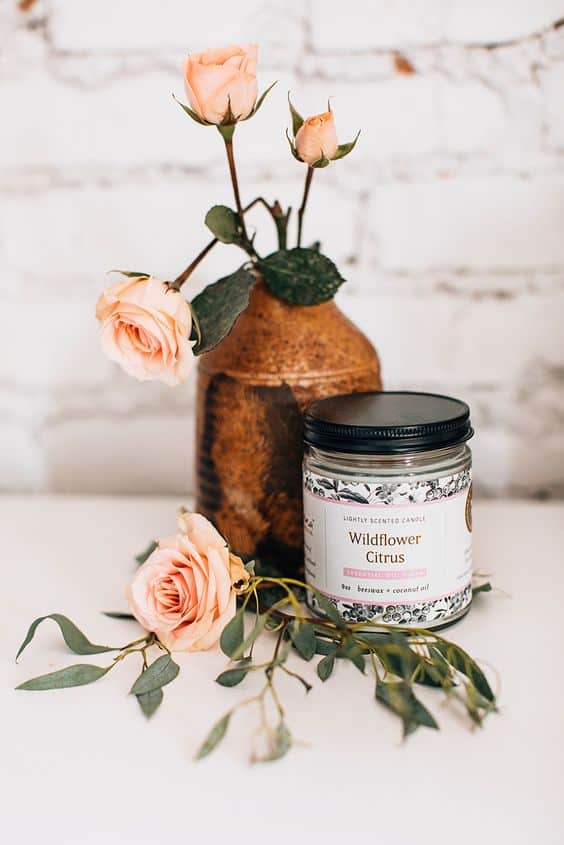
1. Fragrance/Scent
One of the easiest ways to vet candles is to avoid ones made with “fragrance”. Here’s why.
In most cases, when you look at a product ingredient label, you will see each ingredient listed individually. But under U.S. regulations, when it comes to “complex mixtures of many different natural and synthetic chemical ingredients”, AKA “fragrance”, these complex mixtures can simply be listed as “fragrance”. (1)
This is because under the Fair Packaging and Labeling Act, the law is not allowed to be used to force a company to tell “trade secrets.”
And that’s fine and all except these complex mixtures can contain thousands of components including allergens, VOCs, and phthalates. And these fragranced products can trigger adverse health effects in the general population. (2)
Interpreting fine fragrance or high-quality fragrance or phalate-free fragrance or parfume
I recommend looking for candles that are scented with essential oils only. This means that a product contains oils extracted from whole plants or plant parts. Transparent manufacturers and distributors will always have information about how the oil was made (steam distilled, CO2 extracted, absolute, etc.) and the country the plant material came from that was used to make the oil.
But don’t get tripped up. You will also see terms like; fine fragrance or high-quality fragrance or phalate-free fragrance or parfume.
Jessica Waters, founder and candlemaker of Terralite explains, “This means the product has been scented with synthetic fragrances or a blend of synthetic fragrances and essential oils. Many synthetic fragrances are 95% derived from petroleum. No matter how you brand it, unless it is described as being 100% natural, you can assume the candle contains ingredients that are not natural.”
The other problem with terms like “fine fragrance” is the lack of disclosure and transparency. We want to know what’s in our products and with terms like “natural fragrance”, we are still left in the dark.
RELATED: 12 Hidden Ingredients in Skincare + Makeup and Our Favorite Clean Perfumes.
Interpreting natural fragrance
Jessica continues, “Natural fragrance means that the product was scented with fragrances that were derived from natural plant sources. This is different than essential oils. Natural fragrance manufacturers typically do not disclose how their natural fragrances are made or what plant sources were used to make the fragrance so very little information is known about them other than they are “natural”. Since there is no official body regulating fragrances or natural fragrances, including no labeling requirements as to what is in fragrances, there is a risk that it could include synthetic ingredients unless otherwise stated.”
Takeaway: Choose brands that use transparent language around what is in their candles. I recommend looking for candles scented with “100% essential oils” or “essential oils only” as an easy way to vet candles.
2. Wax
Paraffin and petroleum derived candles release unwanted chemicals into the air. “For a person who lights a candle every day for years or just uses them frequently, inhalation of these dangerous pollutants drifting in the air could contribute to the development of health risks like cancer, common allergies and even asthma.”
Fortunately there are other options like soy wax, vegetable wax, coconut wax and beeswax. But it doesn’t stop there. Sometimes brands will label their candle “made with soy wax” or “coconut wax candle” but these can also include paraffin too. Wax blends are very common in candle making and sometimes not all materials included in these blends are disclosed.
Jessica Waters continues, “Unless a product or company states that their wax is “paraffin-free”, then most likely a petroleum additive was added to the wax to make the wax harder and increase the melting temperature (the temperature at which the solid wax becomes liquid).”
Takeaway: Look for candles labeled “100% coconut wax” or “100% beeswax” for example. You can also follow up with the company to clarify if you do not see this language on the label.
3. Wicks
Choosing a clean candle also requires wick label decoding. Here are some common terms that can trip people up.
Terms like “Lead-Free Wick”
This means that the wick does not contain lead. However, it’s kind of a greenwashing tactic at this point because the Consumer Product Safety Commission placed a national ban against manufacturing, importing, or selling candles with lead wicks as of October 2003.
Terms like “Natural Cotton Wick”
“Natural cotton wick” means that the wick is made from cotton but unless it says “unbleached cotton” the wick has gone through a chemical bleaching process.
Takeaway: Look for cotton wicks that are unbleached. This usually takes a follow-up with the brand to clarify.
RELATED: 5 tips on how to live a cozier life.
Questions to ask brands when shopping for clean candles
Sometimes you can’t find all of the information on the candle label or the website.
Jessica Waters adds, “The confusing thing is, not every company has the same ethics about labeling, so although a candle may say “natural”, there’s a chance that it might not actually be 100% natural.”
Here are some questions for brands that will help guide you in the right direction towards finding safe candles:
- Does your wax contain paraffin?
- Is your cotton wick unbleached?
- Do you use fragrance or essential oils?
RELATED: Check out our Organic hair dye review and our non-toxic nail polish buying guide
Cruelty free + vegan candles
Two more terms you may see on candle labels that are worth addressing. If you see a candle labeled “cruelty free”, it means that candle has not been tested on animals. It does not refer to whether that candle is natural or not.
Similarly, if you see the term vegan on a candle, it means that a product does not contain any animal products or byproducts. It does not refer to whether or not that candle is natural or not.
Nontoxic candle buying guide
Here are some luxe nontoxic candles broken down by category. This is a great place to start if you are on the hunt for a truly natural safe candle.

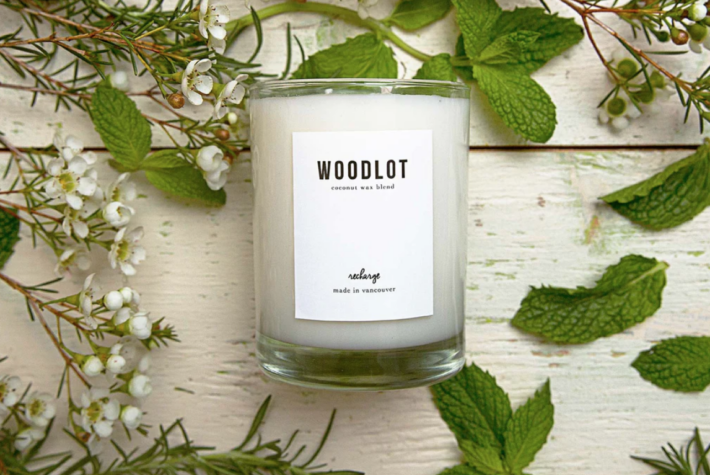
Woodlot Candles
Woodlot candles are made with an organic coconut and non-GMO soy wax blend and scented with essential oils and poured over Eco Wicks. Hand-poured in Canada in recyclable glass. Comes in 7 scents.
8 oz+ | 40 hour burn time+ | $26+

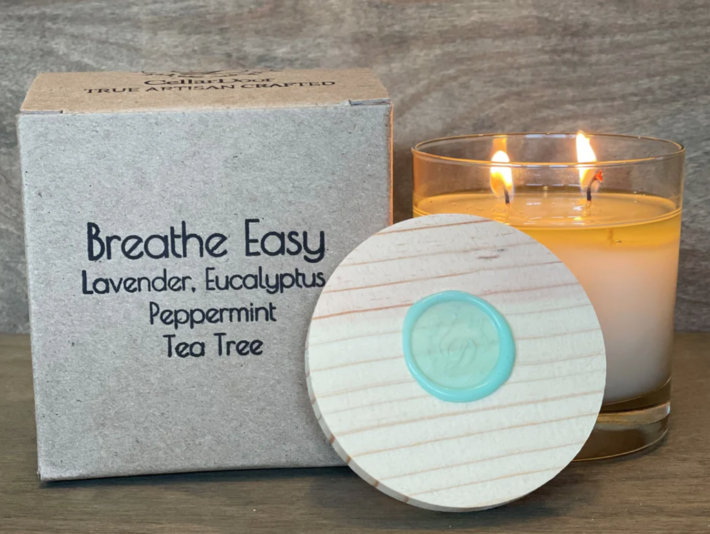
Cellar Door
Cellar Door candles are a sustainable coconut wax and beeswax blend, scented with local, cold-pressed or steam distilled essential oils from a neighboring lavender farm. Cotton wicks dipped in beeswax. This company does not use plastic in shipping materials. Only recycled paper and re-used cardboard.
8 oz+ | 30 hour burn time+ | $20+
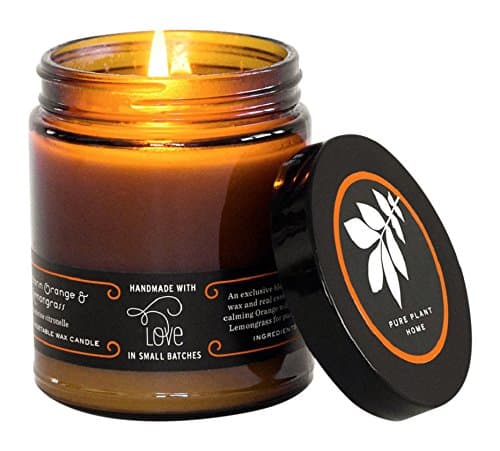
Pure Plant Home Candles
Pure Plant Home candles are made with 100% coconut wax, scented with essential oils only and poured over an unbleached cotton wick. The outer box is also FSC certified, recycled paper printed with vegan, plant based inks in a wind powered, solar powered, environmentally responsible facility. Several scents, sizes and price points.
6 oz | 40 hour burn time | $25
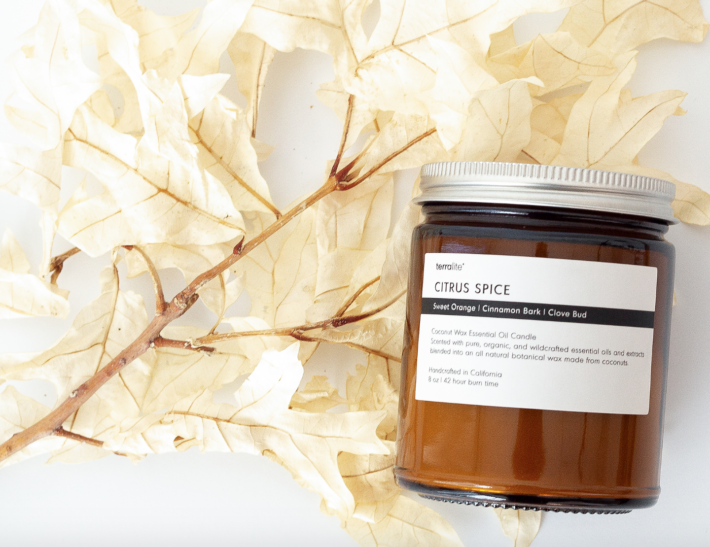
Terralite
These candles are made with hand-poured coconut wax and blended with pure essential oils and extracts from plants that were grown without the use of pesticides or chemical fertilizers. They also feature a chemical-free hemp core wick, recycled amber glass containers, a recyclable tin lid and recycled paper labels. Terralite is also 1% For The Planet.
I’ve tried all the scents and my personal fave is Desert Sage.
8 oz | 40 hour burn time | $34
Save: Use code TNK10 for 10% off your purchase at Terralite.

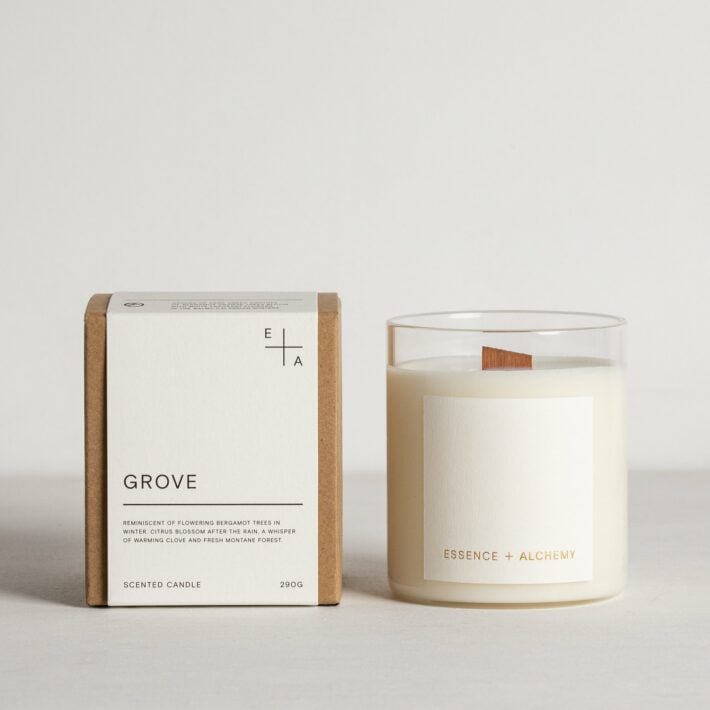
Essence and Alchemy
Essence and Alchemy candles are made with rapeseed wax, scented with essential oils only and poured over a handmade FSC certified wood wick. Love that it’s housed in a reusable handblown borosilicate glass vessel which is perfect for their refill subscription option. Packaged in a recycled kraft cardboard box + FSC paper labels. Plastic Free.
9.5 oz | 70 hour burn time | $62
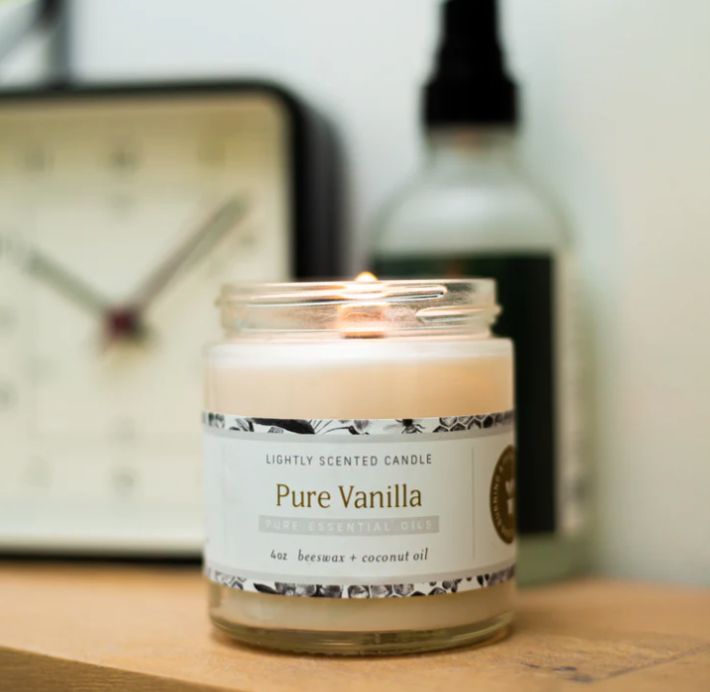
Fontana Candle Co.
Fontana Candle Co candles are made with pure beeswax and coconut oil. Each candle is scented with essential oils and has a wooden wick that crackles when lit. 15 scents currently available including limited edition holiday scents.
9 oz | 35-40 hours burn time | $25.99
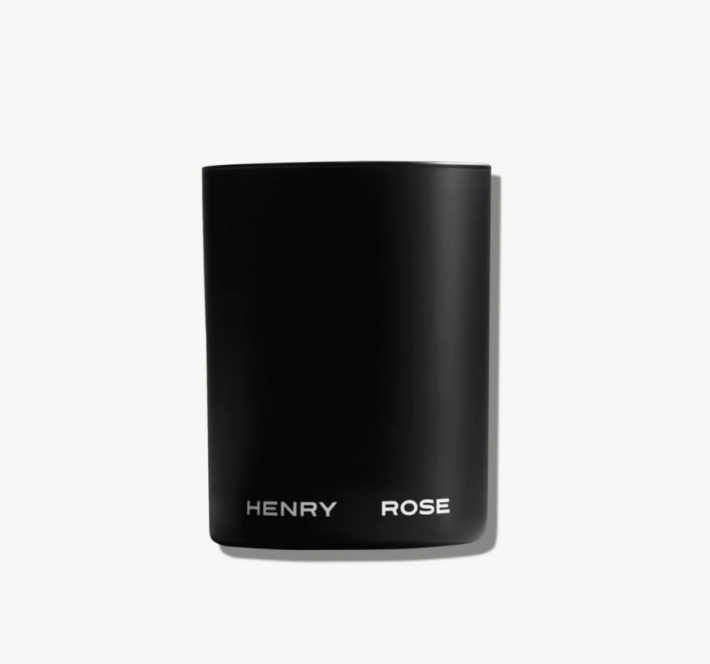
Henry Rose
Eek! I love their perfume (Jake’s House) and was excited to see that it also comes in candle form.
10 oz | 60 hour burn time | $65
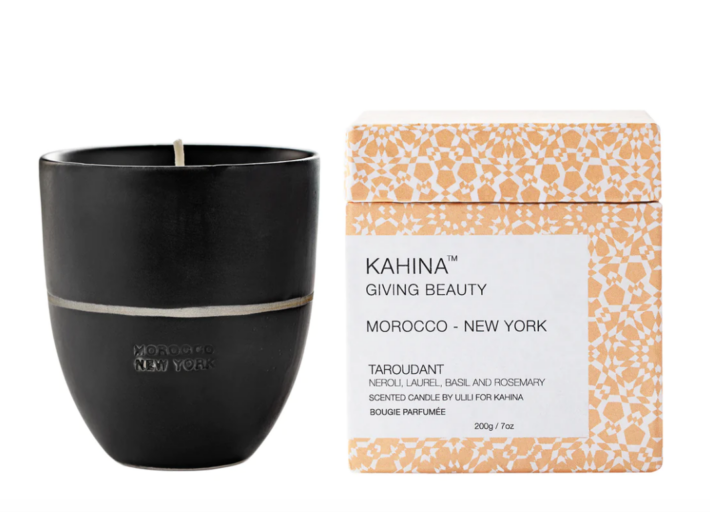
Kahina Giving Beauty Candle
Kahina Giving Beauty’s candle is crafted from vegetable wax and beeswax harvested at the base of Morocco’s Rif Mountains and scented with cedar, clove, ylang ylang, and orange blossom essential oils and cast in partially glazed ceramic jars.
7 oz. | 40 hour burn time | $69
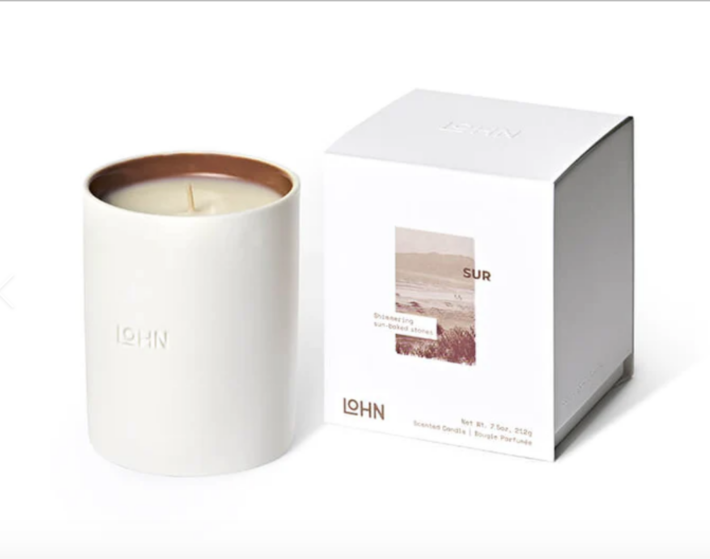
LOHN Candles
LOHN candles are hand-poured and some come in a natural ceramic jar that is perfect for repurposing. The scents are unique and fun like Black Pepper and Rosemary and Blood Orange and Pomelo.
7.5 oz | 50 hour burn time | $44
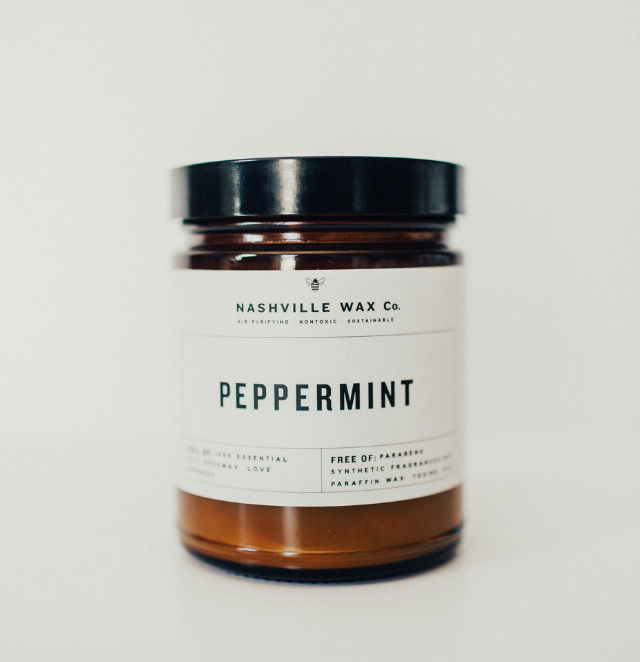
Nashville Wax Company
Nashville Wax Company pours pure beeswax and 100% essential oil candles. Their Autumn candle with myrrh, cinnamon and clove is calling my name. Nashville Wax Co. says “Beeswax is the densest wax and therefore burns longer than any other wax.”
6 oz+ | 40 hours burn time+ | $35+
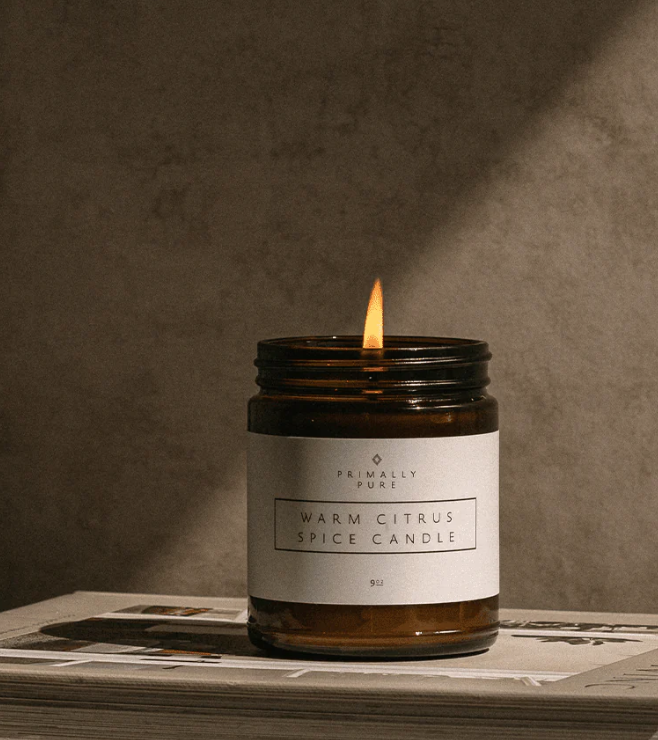
Primally Pure | $52
Primally Pure uses a blend of beeswax + coconut wax that they say actually purifies and detoxifies the air. As an added eco bonus their candles come in a recyclable glass jar.
6 oz | 25 hours burn time | $52+
More non-toxic candles recommended by readers!
We got SEVERAL reader recommendations for non-toxic candles. I went through them all. Some brands only offered seasonal candles and were no longer available while other brands didn’t make the TNK clean cut….these ones did!
What would you add to this list?
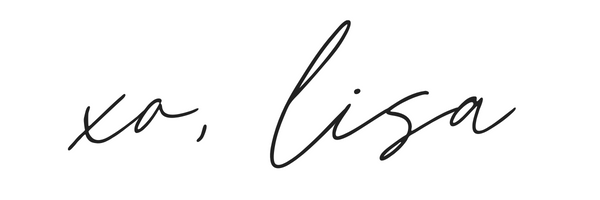
TNK Team Note: This article contains affiliate links. TNK uses affiliate links as a source for revenue to fund operations of the business and to be less dependent on branded content. TNK stands behind all product recommendations. Still have questions about these links or our process? Feel free to email us.
Common questions about buying safe and non-toxic candles?
Candles that are scented with essential oils, made with 100% natural wax, and have unbleached cotton wicks are some things that can identify non-toxic candles. More here.
Not all candles are vegan. A vegan candle is made without the use of animal ingredients or byproducts like beeswax, stearic acid, goat’s milk, or animal fat.
It’s possible that some candles may be tested on animals. Look for “cruelty-free” labeling or research candle companies before buying.
References
1. Fragrances in Cosmetics, U.S. Food & Drug Administration.
2. Steinemann, Anne. Fragranced consumer products: exposures and effects from emissions, Air Quality Atmosphere & Health. Published online 2016 Oct 20.

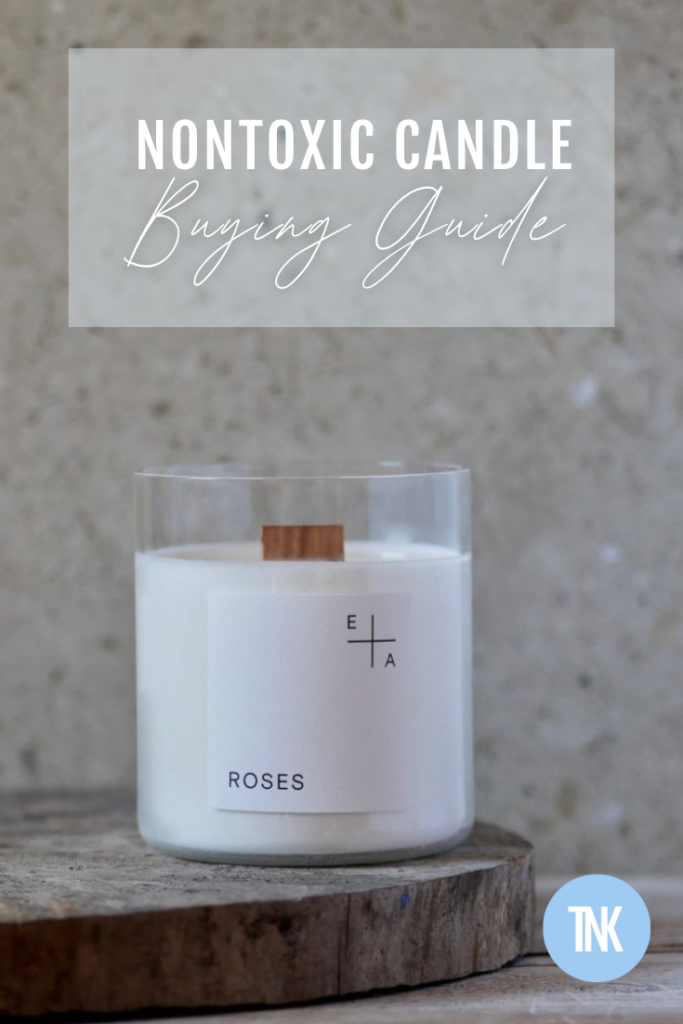
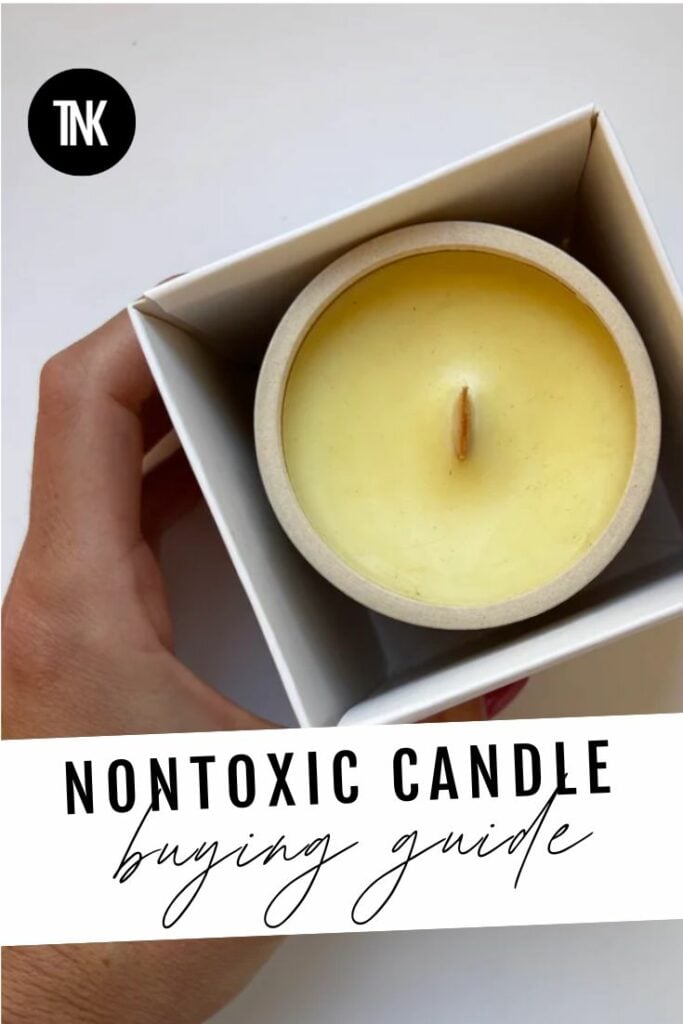
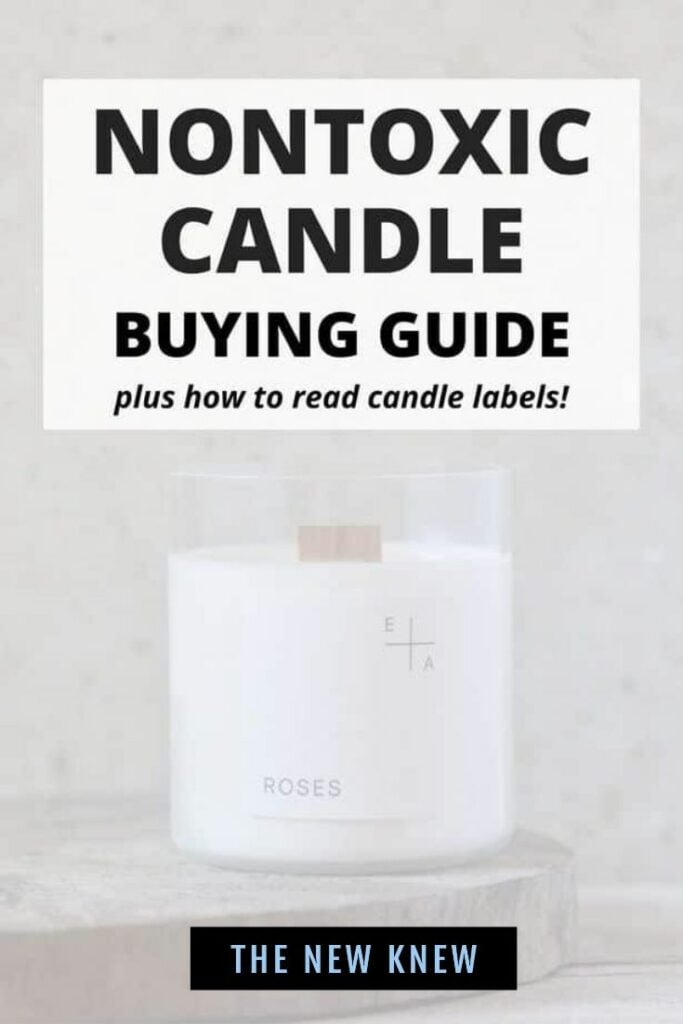
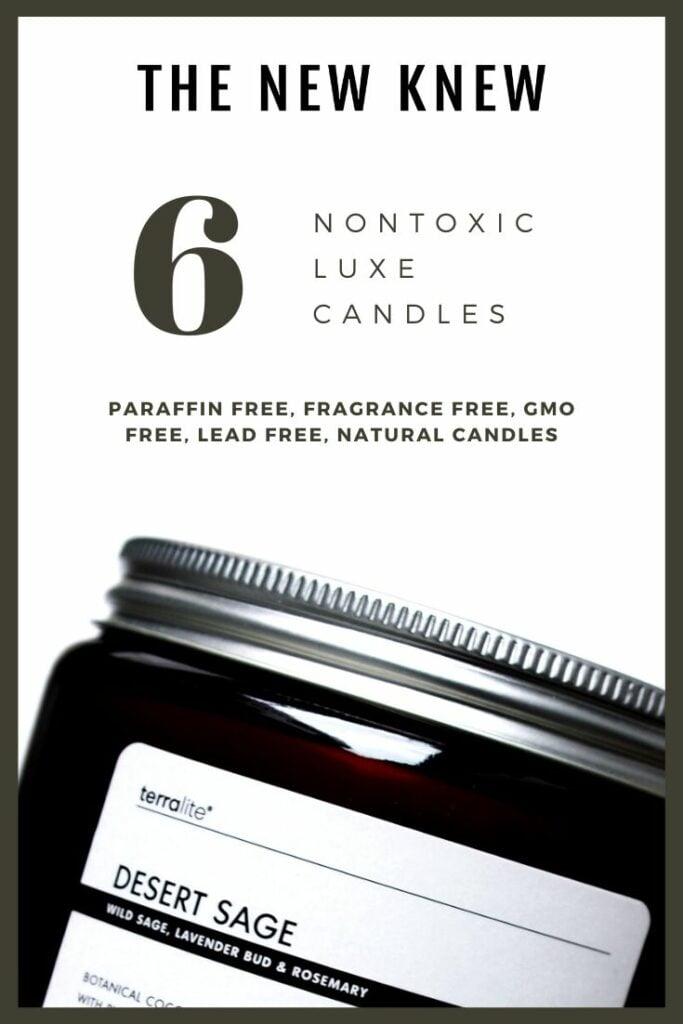

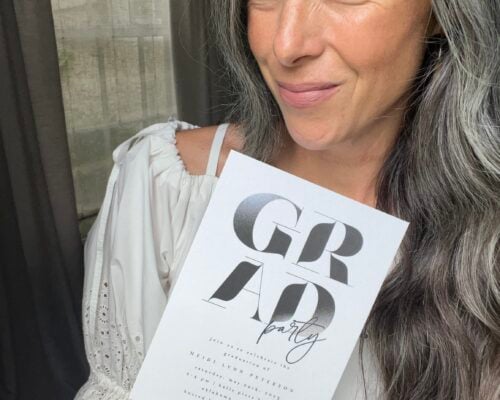

Althaylos
September 29, 2022Essential oils are also bad for your pets to breathe in. Just because something is natural or non synthetic, doesn’t mean it’s safe for your pets or yourself, for that matter. Some of the oils that have been proven in studies to be harmful to pets are some of the ones you’re all mentioning. Eucalyptus and mint is one of the worst. Both are bad for cats and dogs. Tea tree is extremely dangerous to use around pets as well. Other oils in these studies include: wintergreen, sweet birch, citrus oil (d-limonene), pine oils, ylang ylang oil, cinnamon oil, pennyroyal oil, clove oil. As far as cats go, they do not have the necessary enzyme in their liver to metabolize and eliminate these toxins and they can get very sick. Cats are also extremely sensitive to phenols and phenolic compounds, which are found in many essential oils. Please please don’t burn essential oils in any form around your fur babies.
ashley cruz
October 16, 2022what about fate beauty candles and wax melts?
https://www.shopfatebeauty.com/
Lisa Fennessy
October 20, 2022Upon first glance, they look like a good pick to me. : ) Lisa
Ana P.
November 12, 2022Hi, when using essential oils, do we need to dilute them with a carrier oil before adding it to the wax? Or do they already come diluted when buying from a wholesaler? (I’m having trouble finding a clear answer)
– I appreciate the help, TY!
Lisa Fennessy
November 15, 2022Hi Ana! From my understanding there is little to no regulation or standardization around essential oils. Whether or not an essential oil comes diluted or neat would be a question you would need to ask the supplier you use. xo, Lisa
Gabriella Shofet
December 30, 2022Hi what do you think about grow candles?
Lisa Fennessy
January 1, 2023Hi Gabriella! Wow, they look fun. My first question for them would be what is their “100% certified plant-based fragrance”? Between you and me, I’ve never heard of the term “certified plant based” so I googled it and GROW was the first to come up so I think it’s a term they made up. I would want clarification here. xo, Lisa
Sandy
January 31, 2023Hi I have a candle business at this point and I was wanting to make it clean. Where can I find oils that would be considered clean and healthy? I am in Ontario as well so please give me any advice. If you can I use millennium soy wax for several years now and I’ve noticed an irritation with my eyes lately so I would like to clean up my act and possibly start over. Thanks in advance Sandy.
Lisa Fennessy
February 24, 2023Hi Sandy, check out Mountain Rose Herbs who offers USDA certified organic oils that you can also order in bulk I believe ; )
Erica Collins
June 18, 2023Hi! I was wondering if you know anything about Altered states candles? Specifically the sanctuary blend? I recently discovered it and I’m totally obsessed.
Lisa Fennessy
June 23, 2023Just checked them out and I would ask them: 1. Their candle says “soy blend”. What’s the blend? There could be paraffin there. 2. Are there any synthetic fragrance components in the scent? (Not that synthetic = bad, but they are only listing essential oil “notes” which are not ingredients so just want more info there).
VINEVIDA
July 14, 2023Thank you for compiling a list of non-toxic candles that allow us to create a cozy ambiance without compromising our health. Your efforts are greatly appreciated
Tracy
September 28, 2023Hi, what are your thoughts about Antique Candke Co.? They say 100% sit, lead free cotton wick and fragrance that is phthalate and paraben free.
Lisa Fennessy
October 17, 2023Hi Tracy! I would ask for more information on the fragrance oils they use. See if they will share an ingredient list with you. Sometimes a brand like this will say they are using “nontoxic fragrance oils” but they are using that language because they people they bought the fragrance oils from are using that language. The only way to truly tell is to see what is in the fragrance oil exactly. The catch is, sometimes the brand won’t disclose this due to “trade secret” protection BUT if the brand can speak knowledgeably on the topic then you will be able to make a better decision. Also they say they use natural cotton wicks but they don’t mention if they are non-bleached or not…just another question to ask if you are going back and forth with them….let us know what you find out!